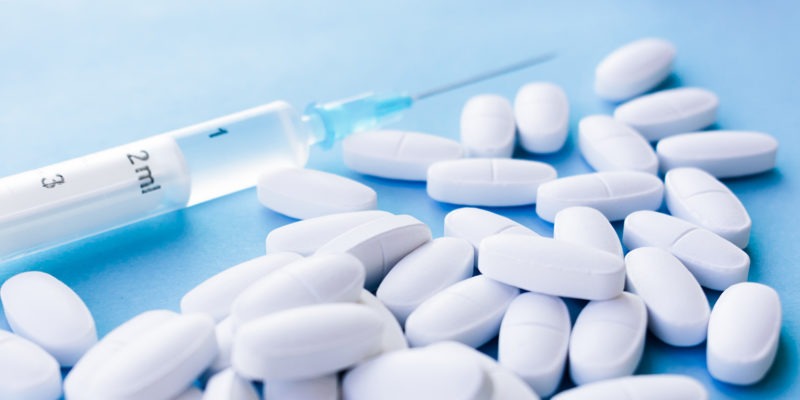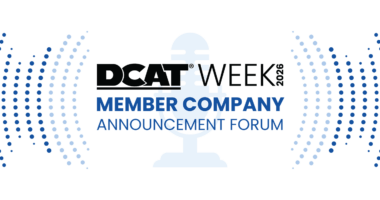Drug Products: Key Trends & Recent Approvals
What are noteworthy trends in drug delivery and drug-product development in key dosage forms: solid dosage and parenteral drugs? A look at key technology advances and recent new drug approvals.
Recent trends: new drug approvals
One way to evaluate trends in drug products is to look at the dosage forms of new molecular entities (NMEs) approved by the US Food and Drug Administration’s (FDA) Center for Drug Evaluation and Research (CDER). NMEs are products that contain active moieties that FDA had not previously approved, either as a single ingredient drug or as part of a combination product. Table I at the end of the article provides a listing of new molecular entities and new therapeutic biological products that FDA’s CDER has approved thus far in 2022 (as of July 31, 2022) and their dosage forms/route of administration. This listing does not contain vaccines, allergenic products, blood and blood products, plasma derivatives, cellular and gene therapy products, or other products that FDA’s Center for Biologics Evaluation and Research has approved thus far in 2022.
Thus far in 2022 (as of July 31, 2022), FDA’s CDER has approved 16 NMEs, of which 75%, or 12 drugs, were small molecules, and 25%, or four were biologic-based drugs. Looking at the new drug approvals from a dosage form/route of administration level, the number of new drug approvals were evenly matched among solid dosage product and parenteral drugs. Seven, or 44% of the new drugs approved thus far were solid-dosage products (tablets or capsules), and seven, or 44%, were parenteral drugs. There was also one oral suspension product approved and one topical cream product approved (see Table I at the end of the article).
On a company basis, the large bio/pharmaceutical companies accounted for seven or 44%, of the new drug approvals thus far in 2022 and small-to-mid-sized companies, nine approvals, or 56% of the 16 approvals by FDA’s CDER thus far in 2022. On a dosage form level, parenteral drugs dominated the new drug approvals from the large bio/pharmaceutical companies. Five of the seven new drugs approved from the large bio/pharmaceutical companies were parenteral drugs, and two were solid-dosage products.
Leading among the large bio/pharma companies was Bristol-Myers Squibb, which had two new drug approvals thus far in 2022: Opdualag (nivolumab; relatlimab-rmbw), a parenteral drug for treating unresectable or metastatic melanoma, and Camzyos (mavacamten), a solid-dosage product for treating certain classes of obstructive hypertrophic cardiomyopathy, a condition in which the heart muscle becomes abnormally thick (see Table I at the end of the article).
Lilly, Novartis, Pfizer, Roche, and Sanofi each had one new drug approval thus far in 2022. These include four parenteral drugs: Lilly’s Mounjaro (tirzepatide), a drug for treating Type II diabetes; Novartis’ Pluvicto (lutetium lu-177 vipivotide tetraxetan) for treating a certain form of prostate cancer; Roche’s Vabysmo (faricimab-svoa); and Sanofi’s Enjaymo (sutimlimab-jome) for treating neovascular (wet) aged-related macular degeneration and diabetic macular edema. Pfizer’s new drug approval was for Cibinqo (abrocitinib) for treating refractory, moderate-to-severe atopic dermatitis (see Table I at the end of the article).
Technology advances
Technology plays an important role in advancing new approaches in drug delivery and potentially commercial applications. Below are some interesting developments reported thus far in 2022.
Enable Injections’ on-body subcutaneous drug-delivery system. Enable Injections, a Cincinnati, Ohio-based company developing and manufacturing on-body subcutaneous drug-delivery systems as an alternative to intravenous (IV) administration, made two significant moves in 2022: (1) raising $215 million to fund work on its subcutaneous drug-delivery system, enFuse, and (2) being part of a EUR 300-million ($309 million) collaboration between Sanofi and the investment firm, Blackstone Life Sciences, to advance the clinical development program for the subcutaneous formulation and delivery of Sanofi’s Sarclisa (isatuximab-irfc), a drug for treating multiple myeloma. The drug is already approved for IV administration, and Sanofi is partnering with Enable Injections for the subcutaneous administration. Enable’s enFuse is a drug-delivery technology designed as an alternative to IV administration to enable subcutaneous delivery of large volumes of up to 50 mL.
Lilly’s, Triastek’s pact for 3-D printing for oral drug delivery. Last month (July 2022), Eli Lilly and Company entered into an agreement with Triastek, a Nanjing, China-based 3D-printing technology platform company for pharmaceuticals, to apply 3D printing technology to enable targeted release of oral drugs in specific regions of the gastrointestinal tract, specifically the intestine.
Under the agreement, Triastek will conduct a study of excipient properties and process parameters to maintain drug stability throughout the formulation development and 3D-printing process as well as during drug release. Additionally, it will identify a three-dimensional structure dosage form design to enable programmed release of drugs in specific parts of the intestine, with the goal of improving the bioavailability of orally administered drugs.
Multifunctional wireless robots in drug delivery. Engineers at Stanford University recently reported their research in using multifunctional wireless robots for targeted drug delivery. The research builds on advances is this field and reports on their research in developing a spinning-enabled wireless amphibious origami millirobot that works as a multifunctional untethered unit that generates movement in various working environments through rolling, flipping, and spinning-induced propulsion. The folding/unfolding is utilized as a pumping mechanism for controlled delivery of liquid medicine. Using the device, the Stanford researchers delivered a liquid medicine to a target in the stomach of a pig ex vivo.
Advances in implantable devices for drug delivery. Implantable devices that release insulin into the body hold promise as an alternative way to treat diabetes without insulin injections or cannula insertions. However, one obstacle that has prevented their use so far is that the immune system attacks them after implantation, forming a thick layer of scar tissue that blocks insulin release. This phenomenon, known as the foreign body response, can also interfere with many other types of implantable medical devices. Engineers and researchers at the Massachusetts Institute of Technology (MIT) have devised a way to overcome this response. In a study of mice, they showed that when they incorporated mechanical actuation into a soft robotic device, the device remained functional for much longer than a typical drug-delivery implant, according to information from MIT.
The researchers’ implant includes a mechanically actuated soft robotic device that can be inflated and deflated. It is a two-chambered device made of polyurethane, a plastic that has similar elasticity to the extracellular matrix that surrounds tissues. One of the chambers acts as a drug reservoir, and the other acts as a soft, inflatable actuator. Using an external controller, the researchers can stimulate the actuator to inflate and deflate on a specific schedule. This mechanical actuation drives away immune cells called neutrophils, the cells that initiate the process that leads to scar tissue formation.
Table I: Dosage Form/Route Administration of New Molecule Entities Approved by the US Food and Drug Administration’s Center for Drug Evaluation and Research, January–July 31, 2022
| Company | Proprietary name (active pharmaceutical ingredient); NDA or BLA | Dosage Form; Route of Administration | Indication |
| Agios Pharmaceuticals | Pyrukynd (mitapivate); NDA | Tablet; oral | Hemolytic anemia in pyruvate kinase deficiency, condition in which red blood cells break down faster than they should. |
| Alnylam Pharmaceuticals | Amvuttra (vutrisiran); NDA | Solution; subcutaneous | Polyneuropathy of hereditary transthyretin-mediated amyloidosis, rare disease characterized by multisystem extracellular deposition of amyloid, leading to dysfunction of different organs and tissue |
| Bristol-Myers Squibb | Opdualag (nivolumab; relatlimab-rmbw); BLA | Solution; intravenous | Unresectable or metastatic melanoma |
| Bristol-Myers Squibb* | Camzyos (mavacamten); NDA | Capsule; oral | Certain classes of obstructive hypertrophic cardiomyopathy |
| CTI BioPharma | Vonjo (pacritinib); NDA | Capsule; oral | Intermediate or high-risk primary or secondary myelofibrosis in adults with low platelets |
| Dermavant Sciences** | Vtama (tapinarof); NDA | Cream; topical | Plaque psoriasis |
| Eli Lilly and Company | Mounjaro (tirzepatide); NDA | Solution; subcutaneous | To improve blood sugar control in Type 2 diabetes, in addition to diet and exercise |
| Idorsia Pharmaceuticals | Quviviq (daridorexant); NDA | Tablet; oral | Insomnia |
| Immunocore | Kimmtrak (tebentafusop-tebn); BLA | Injectable; injection | Unresectable or metastatic uveal melanoma |
| Marinus Pharmaceuticals | Ztalmy (ganaxolone); NDA | Suspension; oral | Seizures in cyclin-dependent kinase-like 5 deficiency disorder |
| Mycovia Pharmaceuticals | Vivjoa (oteseconazole); NDA | Capsule; oral | To reduce the incidence of recurrent vulvovaginal candidiasis (RVVC) in females with a history of RVVC who are not of reproductive potential |
| Novartis*** | Pluvicto (lutetium lu-177 vipivotide tetraxetan); NDA | Solution; intravenous | Metastatic castration-resistant prostate cancer |
| Pfizer | Cibinqo (abrocitinib); NDA | Tablet; oral | Refractory, moderate-to-severe atopic dermatitis |
| Phathom Pharmaceuticals | Voquezna Triple Pak (amoxicillin; clarithromycin; vonoprazan); NDA | Capsule, tablet; oral | Helicobacter pylori infection, a type of bacteria that infects the stomach |
| Roche | Vabysmo (faricimab-svoa); BLA | Injectable; intravitreal | Neovascular (wet) aged-related macular degeneration and diabetic macular edema |
| Sanofi**** | Enjaymo (sutimlimab-jome); BLA | Injectable; injection | To decrease the need for red blood cell transfusion due to hemolysis in cold agglutinin disease, a rare autoimmune disorder characterized by the premature destruction of red blood cells. |
*Bristol-Myers Squibb acquired MyoKardia in 2020 for $13.1 billion and with it, Camzyos (mavacamten).
** Dermavant Sciences is a subsidiary of Roviant Sciences.
***Novartis acquired Advanced Accelerator Applications for $3.9 billion in 2018 and with it, Pluvicto (lutetium lu-177 vipivotide tetraxetan).
****Sanofi acquired Bioverativ in 2018 for $11.6 billion and with it, Enjaymo (sutimlimab-jome).
Source: US Food and Drug Administration’s Center for Drug Evaluation and Research.






